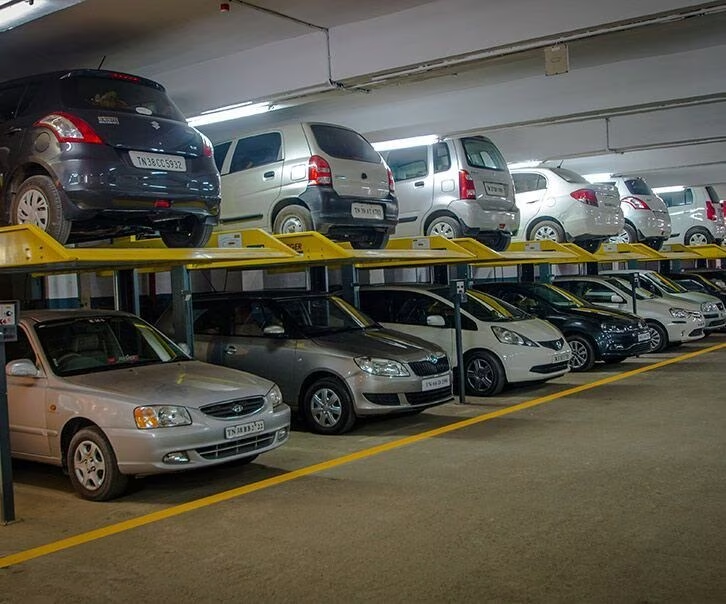Mumbai’s persistent parking woes are set to see a breakthrough as the Brihanmumbai Municipal Corporation (BMC) launches an ambitious ₹504.19 crore project to establish four multi-level robotic parking towers across the city. This technologically advanced solution aims to optimise limited urban space while addressing the city’s soaring parking demand.
The parking towers will be strategically located at the BMC Engineering Hub in Worli, near Mumbadevi Temple in Kalbadevi, opposite Matunga Central railway station, and Hutatma Chowk near Bombay High Court. These facilities will introduce elevated electromechanical systems capable of parking and retrieving vehicles with minimal human intervention.
Breaking Down the Numbers
Worli: The largest facility, with a 23-floor structure and two basements, will accommodate 640 cars and 112 two-wheelers. Its ₹208.16 crore contract involves demolishing an existing building at the site.
Mumbadevi: A 14-floor tower with space for 546 vehicles, with a budget of ₹122.61 crore.
Matunga: An 18-floor facility opposite the railway station, designed for 475 vehicles, costing ₹103.88 crore.
Hutatma Chowk: A mechanised parking system with four underground floors, housing 176 cars and 18 two-wheelers, with a ₹69.54 crore budget.
Each tower is engineered for efficiency, allowing motorists to park their vehicles in under three minutes through automated robotic systems. The cost for users is projected to remain nominal, providing a seamless and affordable parking experience.
Currently, Mumbai has a parking capacity of approximately 40,000 vehicles, far below the estimated demand of 400,000. BMC’s existing inventory includes 28,500 spots in public parking lots and 11,500 for on-street parking. While some citizen groups have raised concerns over land utilisation and project costs, officials emphasise the pressing need for modern infrastructure to alleviate the city’s parking crisis. As urban space becomes increasingly scarce, projects like these signify a leap towards a technologically driven urban management approach.




